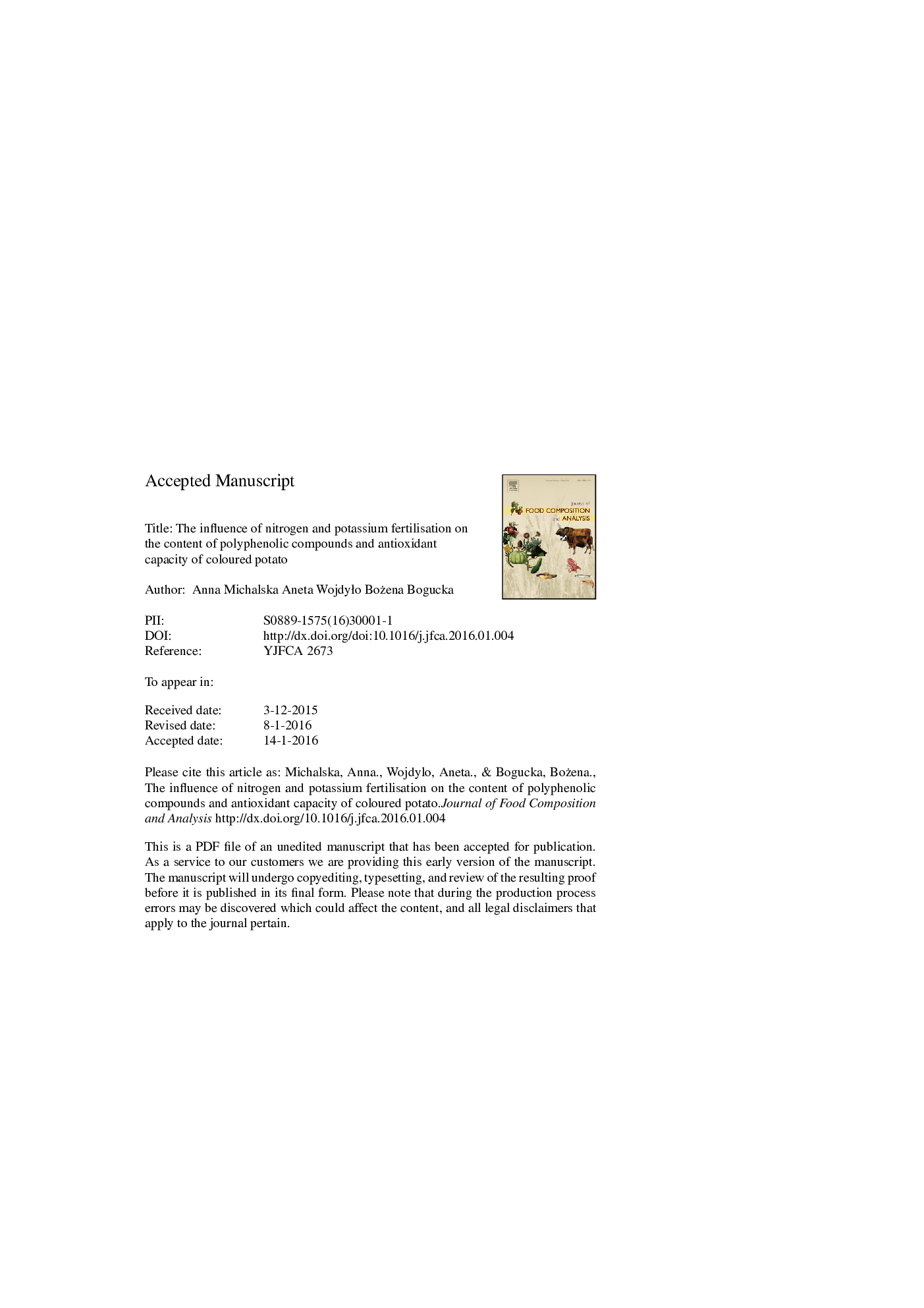| Article ID | Journal | Published Year | Pages | File Type |
|---|---|---|---|---|
| 7620250 | Journal of Food Composition and Analysis | 2016 | 23 Pages |
Abstract
The effect of fertilisation rates of nitrogen: 0 (control treatment-no soil fertilisation), 40, 80 and 120Â kg/ha and potassium: 0 (control treatment), 120, 150 and 180Â kg/ha on the content of anthocyanins, phenolic acids and antioxidant capacity in purple-blue potato cv. 'Blue Congo' was examined. Anthocyanins and phenolic acids were identified and quantified by LC-MS and UPLC-PDA. Nitrogen was more effective in increasing the anthocyanin content-their quantity in tubers after nitrogen application was twice as much as that found after potassium application. Among phenolic acids, the dominant one was chlorogenic acid, the content of which significantly increased after nitrogen fertilisation at 120Â kg/ha, in line with the increase in total concentration of phenolic acids and antioxidant capacity. The adjustment of nitrogen and potassium fertilisation levels during the growth of purple-blue potatoes seems to be an effective way to increase the expression of polyphenolic compounds in these cultivars. Therefore, fertilisation with N at 120Â kg/ha and K at 120 and 150Â kg/ha is recommended as a way to improve the content of biologically active compounds and antioxidant properties, and consequently, to enhance the nutritional value and the functionality of purple-blue potatoes.
Keywords
Related Topics
Physical Sciences and Engineering
Chemistry
Analytical Chemistry
Authors
Anna Michalska, Aneta WojdyÅo, Bożena Bogucka,
